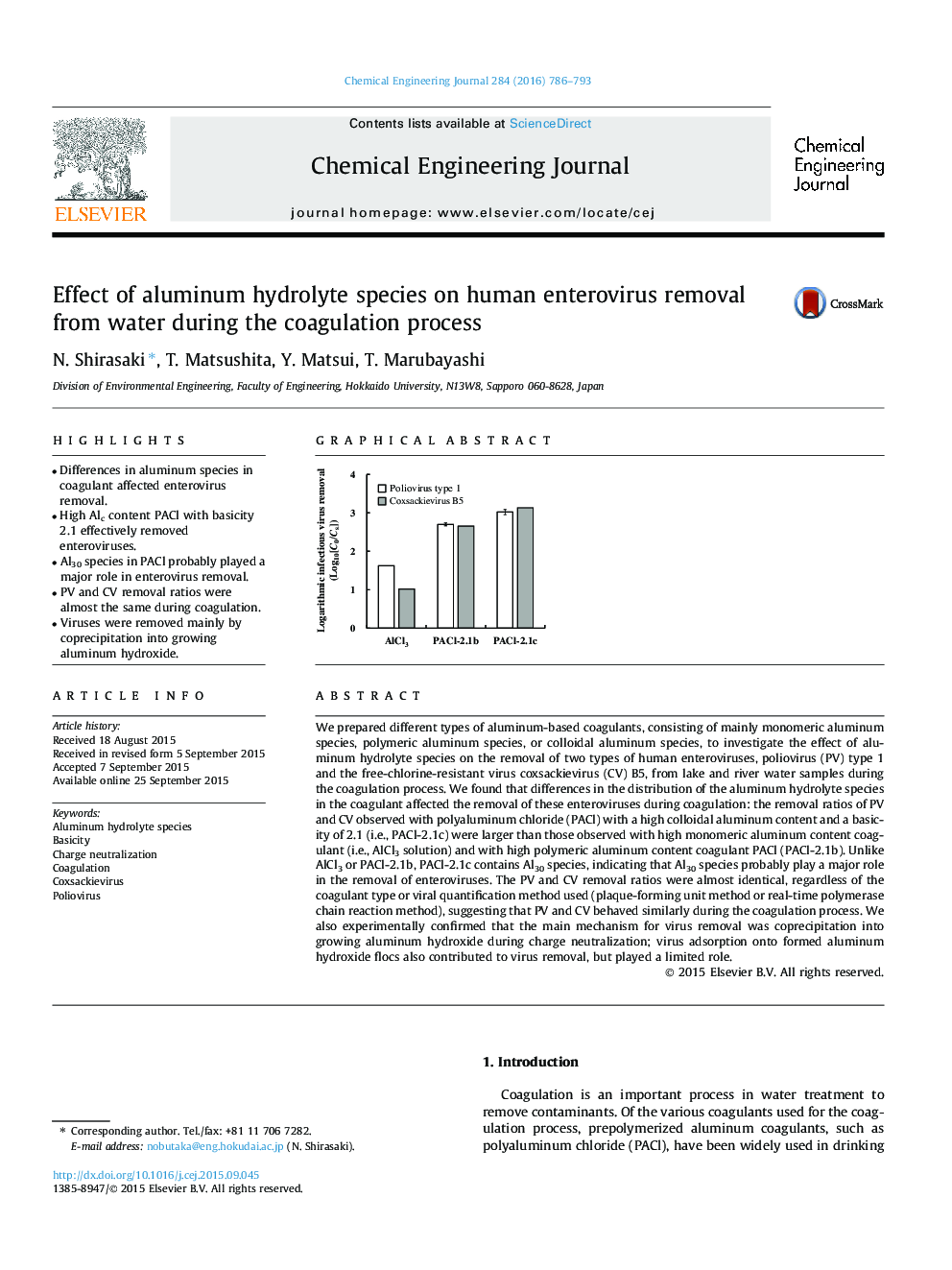| کد مقاله | کد نشریه | سال انتشار | مقاله انگلیسی | نسخه تمام متن |
|---|---|---|---|---|
| 146001 | 456356 | 2016 | 8 صفحه PDF | دانلود رایگان |
• Differences in aluminum species in coagulant affected enterovirus removal.
• High Alc content PACl with basicity 2.1 effectively removed enteroviruses.
• Al30 species in PACl probably played a major role in enterovirus removal.
• PV and CV removal ratios were almost the same during coagulation.
• Viruses were removed mainly by coprecipitation into growing aluminum hydroxide.
We prepared different types of aluminum-based coagulants, consisting of mainly monomeric aluminum species, polymeric aluminum species, or colloidal aluminum species, to investigate the effect of aluminum hydrolyte species on the removal of two types of human enteroviruses, poliovirus (PV) type 1 and the free-chlorine-resistant virus coxsackievirus (CV) B5, from lake and river water samples during the coagulation process. We found that differences in the distribution of the aluminum hydrolyte species in the coagulant affected the removal of these enteroviruses during coagulation: the removal ratios of PV and CV observed with polyaluminum chloride (PACl) with a high colloidal aluminum content and a basicity of 2.1 (i.e., PACl-2.1c) were larger than those observed with high monomeric aluminum content coagulant (i.e., AlCl3 solution) and with high polymeric aluminum content coagulant PACl (PACl-2.1b). Unlike AlCl3 or PACl-2.1b, PACl-2.1c contains Al30 species, indicating that Al30 species probably play a major role in the removal of enteroviruses. The PV and CV removal ratios were almost identical, regardless of the coagulant type or viral quantification method used (plaque-forming unit method or real-time polymerase chain reaction method), suggesting that PV and CV behaved similarly during the coagulation process. We also experimentally confirmed that the main mechanism for virus removal was coprecipitation into growing aluminum hydroxide during charge neutralization; virus adsorption onto formed aluminum hydroxide flocs also contributed to virus removal, but played a limited role.
Figure optionsDownload as PowerPoint slide
Journal: Chemical Engineering Journal - Volume 284, 15 January 2016, Pages 786–793
